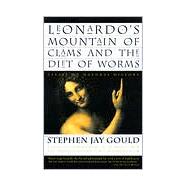
| Introduction: Pieces of Eight: Confession of a Humanistic Naturalist | p. 1 |
| Art and Science | |
| The Upwardly Mobile Fossils of Leonardo's Living Earth | p. 17 |
| The Great Western and the Fighting Temeraire | p. 45 |
| Seeing Eye to Eye, Through a Glass Clearly | p. 57 |
| Biographies in Evolution | |
| The Clam Stripped Bare by Her Naturalists, Even | p. 77 |
| Darwin's American Soulmate: A Bird's-Eye View | p. 99 |
| A Seahorse for All Races | p. 119 |
| Mr. Sophia's Pony | p. 141 |
| Human Prehistory | |
| Up Against a Wall | p. 161 |
| A Lesson from the Old Masters | p. 179 |
| Our Unusual Unity | p. 197 |
| Of History and Toleration | |
| A Cerion for Christopher | p. 215 |
| The Dodo in the Caucus Race | p. 231 |
| The Diet of Worms and the Defenestration of Prague | p. 251 |
| Evolutionary Facts and Theories | |
| Non-Overlapping Magisteria | p. 269 |
| Boyle's Law and Darwin's Details | p. 285 |
| The Tallest Tale | p. 301 |
| Brotherhood by Inversion (or, As the Worm Turns) | p. 319 |
| Different Perceptions of Common Truths | |
| War of the Worldviews | p. 339 |
| Triumph of the Root-Heads | p. 355 |
| Can We Truly Know Sloth and Rapacity? | p. 375 |
| Reversing Established Orders | p. 393 |
| Bibliography | p. 405 |
| Illustration Credits | p. 412 |
| Index | p. 414 |
| Table of Contents provided by Syndetics. All Rights Reserved. |
The New copy of this book will include any supplemental materials advertised. Please check the title of the book to determine if it should include any access cards, study guides, lab manuals, CDs, etc.
The Used, Rental and eBook copies of this book are not guaranteed to include any supplemental materials. Typically, only the book itself is included. This is true even if the title states it includes any access cards, study guides, lab manuals, CDs, etc.
Excerpted from Leonardo's Mountain of Clams and the Diet of Worms: Essays on Natural History by Stephen Jay Gould
All rights reserved by the original copyright owners. Excerpts are provided for display purposes only and may not be reproduced, reprinted or distributed without the written permission of the publisher.